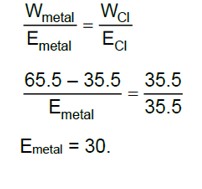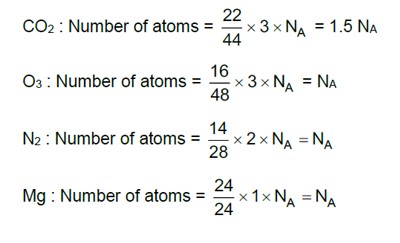Define the law of multiple proportions. Explain it with two examples. How does this law point to the existance of atoms?
Define the law of multiple proportions. Explain it with two examples. How does this law point to the existance of atoms?
-
1 Answer
-
This is a Long Answer Type Questions as classified in NCERT Exemplar
According to the law of multiple proportions, when two elements react to form two or more than two chemical compounds, the ratio between different masses of one of the elements combining with a fixed mass of the other is always in the ratio of tiny numbers.
Example:
1. Compounds of carbon and oxygen:
C and O react to form two different compounds CO and CO2. In CO, 12 parts by mass of C reacts with 16 parts by mass of 0 .
In CO2 ,12 parts by mass of C reacts with 32 parts by mass of O .
If the mass of C is fixed at 12 parts of mass then the ratio in the masses of oxyg
...more
Similar Questions for you
In the medical entrance test NEET, there can be 1 to 3 questions from this chapter. Some year, the Chemistry section of NEET has only one question from this chapter and in some other years, there can be 3 questions.
The following are the key concepts of this chapter: Compound, Elements, Rules, Law of conservation of mass, Addition and Subtraction, Atomic Mass, Law of multiple proportions, and Molecular Mass.
As the name suggests, the first chapter of the NCERT Class 11 Chemistry introduces various basic concepts of chemistry, such as the definition and importance of chemistry, atomic matter and molecular masses, the mole concept, laws of chemical combination, empirical, stoichiometry, and molecular formulas. It also includes the concepts of molarity and molality.
Taking an Exam? Selecting a College?
Get authentic answers from experts, students and alumni that you won't find anywhere else
Sign Up on ShikshaOn Shiksha, get access to
- 65k Colleges
- 1.2k Exams
- 679k Reviews
- 1800k Answers


